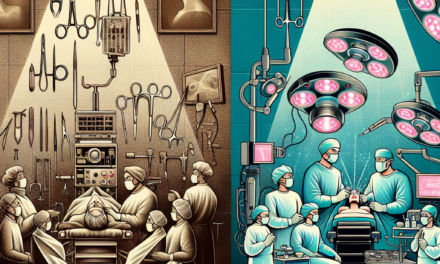Navigating MIPS Value Pathways with Nextech
The Merit-based Incentive Payment System (MIPS) is a critical component of the Quality Payment Program (QPP) established by the Centers for Medicare & Medicaid Services (CMS). As healthcare providers strive to improve patient care while managing costs, understanding MIPS and its Value Pathways is essential. Nextech, a leading provider of healthcare technology solutions, offers tools and resources to help practices navigate these complex requirements. This article delves into the intricacies of MIPS Value Pathways and how Nextech can facilitate a smoother transition for healthcare providers.
Understanding MIPS and Its Importance
MIPS was introduced as part of the Medicare Access and CHIP Reauthorization Act (MACRA) of 2015, aiming to shift the focus of healthcare from volume to value. Under MIPS, eligible clinicians are evaluated based on their performance in four categories: Quality, Cost, Improvement Activities, and Promoting Interoperability. The scores from these categories determine the payment adjustments clinicians receive for their services.
The importance of MIPS cannot be overstated. As the healthcare landscape evolves, providers are increasingly held accountable for the quality of care they deliver. MIPS encourages practices to adopt evidence-based care, improve patient outcomes, and reduce unnecessary costs. By participating in MIPS, providers can not only enhance their reimbursement rates but also contribute to a more sustainable healthcare system.
The Structure of MIPS Value Pathways
MIPS Value Pathways (MVPs) were introduced to streamline the reporting process and align measures with specific clinical specialties and patient populations. The MVP framework allows providers to focus on a set of measures that are more relevant to their practice, making it easier to demonstrate value and improve care quality.
Key components of MIPS Value Pathways include:
- Specialty-Specific Measures: MVPs are designed around specific specialties, allowing providers to report on measures that are most relevant to their practice.
- Patient-Centered Outcomes: MVPs emphasize outcomes that matter to patients, ensuring that care delivery aligns with patient needs and preferences.
- Streamlined Reporting: By consolidating measures, MVPs reduce the burden of reporting and simplify the process for providers.
- Enhanced Feedback: MVPs provide more targeted feedback to clinicians, helping them identify areas for improvement.
- Incentives for Participation: Providers who engage with MVPs may receive additional incentives, including higher payment adjustments.
Understanding the structure of MVPs is crucial for providers looking to optimize their MIPS participation. By aligning their reporting efforts with the specific measures that reflect their practice, providers can enhance their performance and ultimately improve patient care.
How Nextech Supports MIPS Participation
Nextech offers a comprehensive suite of solutions designed to support healthcare providers in navigating MIPS and MVPs. Their platform integrates electronic health records (EHR), practice management, and revenue cycle management, providing a holistic approach to practice operations.
Key features of Nextech’s support for MIPS participation include:
- Automated Reporting: Nextech’s platform automates the collection and reporting of MIPS data, reducing the administrative burden on providers.
- Real-Time Analytics: Providers can access real-time analytics to monitor their performance across MIPS categories, enabling timely adjustments to improve scores.
- Customizable Dashboards: Nextech offers customizable dashboards that allow providers to track their progress toward MIPS goals and identify areas for improvement.
- Educational Resources: Nextech provides educational materials and training sessions to help practices understand MIPS requirements and best practices for reporting.
- Dedicated Support Team: A dedicated support team is available to assist providers with any questions or challenges they may encounter during the MIPS reporting process.
By leveraging Nextech’s solutions, healthcare providers can streamline their MIPS participation, reduce administrative burdens, and focus on delivering high-quality patient care.
Case Studies: Success Stories with Nextech
To illustrate the effectiveness of Nextech’s solutions in navigating MIPS, let’s explore a few case studies of healthcare practices that have successfully improved their MIPS performance using Nextech’s platform.
Case Study 1: A Dermatology Practice
A dermatology practice in Florida faced challenges in meeting MIPS reporting requirements due to the complexity of the measures and the administrative burden on staff. After implementing Nextech’s EHR and practice management solutions, the practice experienced significant improvements in their MIPS performance.
Key outcomes included:
- Increased Quality Scores: The practice improved its quality scores by 15% within one reporting period, thanks to automated data collection and reporting.
- Reduced Administrative Time: Staff reported a 30% reduction in time spent on MIPS-related tasks, allowing them to focus more on patient care.
- Enhanced Patient Engagement: The practice utilized Nextech’s patient engagement tools to improve communication with patients, leading to better adherence to care plans.
This case study highlights how Nextech’s solutions can empower practices to enhance their MIPS performance while improving overall operational efficiency.
Case Study 2: An Orthopedic Surgery Center
An orthopedic surgery center in Texas struggled with low MIPS scores due to inconsistent reporting practices and a lack of real-time performance data. After partnering with Nextech, the center implemented a comprehensive strategy to improve its MIPS participation.
Key outcomes included:
- Improved Cost Efficiency: The center reduced its cost score by 20% by optimizing resource utilization and improving care coordination.
- Streamlined Reporting Process: The automated reporting features of Nextech’s platform allowed the center to submit MIPS data with minimal manual intervention.
- Increased Incentives: As a result of improved performance, the center received a higher payment adjustment, translating to increased revenue.
This case study demonstrates the transformative impact of Nextech’s solutions on MIPS participation, enabling practices to achieve better outcomes and financial rewards.
Future Trends in MIPS and Value-Based Care
The landscape of MIPS and value-based care is continually evolving. As healthcare providers adapt to new regulations and expectations, several trends are emerging that will shape the future of MIPS participation.
- Increased Focus on Health Equity: Future MIPS frameworks are likely to place greater emphasis on health equity, encouraging providers to address disparities in care delivery.
- Integration of Social Determinants of Health: The incorporation of social determinants of health into MIPS measures will help providers better understand and address the factors influencing patient outcomes.
- Advancements in Telehealth: The rise of telehealth services will continue to influence MIPS reporting, with new measures being developed to assess the quality of virtual care.
- Enhanced Data Interoperability: Improved data sharing and interoperability among healthcare systems will facilitate more accurate reporting and better patient care coordination.
- Shift Towards Patient-Reported Outcomes: There will be a growing emphasis on patient-reported outcomes, allowing patients to play a more active role in their care and influencing MIPS measures.
As these trends unfold, healthcare providers must stay informed and adapt their strategies to align with the changing landscape of MIPS and value-based care. By leveraging technology solutions like those offered by Nextech, practices can position themselves for success in this evolving environment.
Conclusion
Navigating MIPS Value Pathways is a complex but essential endeavor for healthcare providers seeking to enhance the quality of care while managing costs. Understanding the structure of MIPS, leveraging technology solutions like Nextech, and staying informed about future trends are critical components of successful participation.
Through case studies and real-world examples, it is evident that Nextech’s comprehensive solutions can significantly improve MIPS performance, streamline reporting processes, and ultimately enhance patient care. As the healthcare landscape continues to evolve, providers must remain proactive in adapting their strategies to meet the demands of value-based care.
In summary, by embracing MIPS Value Pathways and utilizing the tools available through Nextech, healthcare providers can navigate the complexities of MIPS with confidence, ensuring they deliver high-quality care while achieving financial sustainability.





